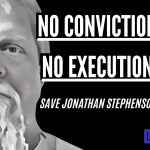I have never read the ethics guidelines for reporters and editors of The New York Times.
I am, however, familiar with the guidelines used by other papers, a portion of which I've reprinted below. I'm posting this in light of the controversy surrounding administration-shill-turned-First-Amendment-martyr-turned-Miss-Run-Amok Judith Miller.
If the Times guidelines are anything like those below, Miller seems to have broken the rules on at least two points. (Here's a roundup of the most recent Miller hubbub from The Washington Post.)
The most egregious was her agreeing to identify the vice president's chief of staff as "a former hill staffer." This was a deliberate attempt to mislead her readers — an attempt to use them for the benefit of her source. That's precisely backwards. (Josh Marshall has more to say on this.)
I've emphasized a few other sections of the guidelines that it seems Miller would've been better off heeding.
Using unnamed sources
The use of unnamed sources in published stories should be rare and only for important news. Whenever possible, reporters should seek to confirm news on the record. If the use of unnamed sources is required:
Use as sources only people who are in a position to know.
Corroborate information from an unnamed source through another source or sources and/or by documentary information. Rare exceptions must be approved by the editor.
Inform sources that reporters will disclose sources to at least one editor. Editors will be bound by the same promise of confidentiality to sources as are reporters.
Hold editors as well as reporters accountable when unnamed sources are used. When a significant story to be published relies on a source who will not be named, it is the responsibility of the senior news executive to confirm the identity of the source and to review the information provided. This may require the editor to meet the source.
Make clear to the reporters and to sources that agreements of confidentiality are between the newspaper and the sources, not just between the reporter and the sources. The newspaper will honor its agreements with sources. Reporters should make every effort to clear such confidentiality agreements with the editors first. Promises of confidentiality made by reporters to sources will not be overridden by the editors; however, editors may choose not to use the material obtained in this fashion.
Do not allow unnamed sources to take cheap shots in stories. It is unfair and unprofessional.
Expect reporters and editors to seek to understand the motivations of a source and take those into account in evaluating the fairness and truthfulness of the information provided.
Make clear to sources the level of confidentiality agreed to. This does not mean each option must be discussed with the source, but each party should understand the agreement. Among the options are:
a) The newspaper will not name them in the article;
b) The newspaper will not name them unless a court compels the newspaper to do so;
c) The newspaper will not name them under any circumstances.
All sources should be informed that the newspaper will not honor confidentiality if the sources have lied or misled the newspaper.
Make sure both sides understand what is being agreed to. For example:
a) Statements may be quoted directly or indirectly and will be attributed to the source. This is sometimes referred to as “on the record.”
b) The information may be used in the story but not attributed to the source. This is sometimes referred to as “not for attribution” or “for background.”
c) The information will not be used in the story unless obtained elsewhere and attributed to someone else. This is sometimes referred to as “off the record.”
Describe an unnamed source’s identity as fully as possible (without revealing that identity) to help readers evaluate the credibility of what the source has said or provided.
Do not make promises you do not intend to fulfill or may not be able to fulfill.
Do not threaten sources.
















